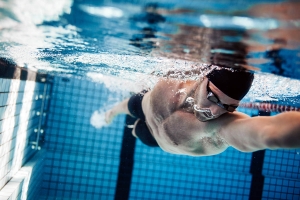Finding new ways to rethink your aquatics revenue strategy.
While the COVID-19 pandemic caused challenges for all aspects of community rec centers, aquatics departments were hit especially hard. With relatively high operation costs, heightened staff shortages and limited number of members who could be in the pool at once, aquatics departments are ready to bounce back and find ways to generate revenue.
Wesley King, the owner and founder of Wesley King Consulting, said while creating new revenue generating programs can be challenging even during good years, a great strategy to have in place is to focus on classes with the highest profit margin rather than what classes bring in the most money.
King said:
“Think about a soda fountain drink. They cost about .08 cents to make including the cup, but we pay $1.50 to $1.99 and don’t think twice about it. As program managers/aquatics leaders you need to think the same way. Classes like ‘parent and tot’ may have 10 babies and 10 adults with one strong instructor rather than the standard swim lesson of four students and one instructor — almost doubling the profit margin. So, while there may be less total revenue from the high profit margin classes, they could be the key to your success. By focusing on your own unique and high-quality classes, you also begin to set yourself apart from other pools. Sell more of what makes you the most money.”
While there is no instruction manual for driving the most revenue in aquatics, over time the industry has learned that building a path from swim lessons to swim team is no longer going to be enough. In addition to focusing on high profit margin classes, King said it’s just as important to build sustainable aquatics programs.
Learn More: Aquatics budgeting in the current conditions.
First, when looking for these types of offerings, it might be beneficial to consider adding programs that are wellness related. These have been trending in popularity over the last few years.
Additionally, finding programs that are nationally accredited by organizations you could partner with to promote and/or that address a specific local health and wellness concern can be beneficial for your facility. King said this also creates opportunities to showcase the staff training/certification of your new program and celebrate the reason why your organization is focusing on wellness-related programs.
King said:
“These classes are ideally bridged or paired with a health care-related service such as physical therapy or others. Consider programs that are accredited nationally, such as Peyow Aqua Pilates or Core Centric Aquatics. Integrating successful land-based programs to your pool such as barre, Pilates, etc., with the current users of that service can get more members in the water.”
Attracting people who are already members to your facility, but don’t typically interact with your pools, is another way to bring more revenue to your aquatics programming. According to King, a great way to achieve this is to switch up the way you’ve been marketing programs in the past.
Learn More: Three industry experts share how to boost pool profits with basic aquatics programming.
While it’s easy to tell parents about upcoming classes or hand out flyers for programs, that will only continue to attract the same people to your pool. King recommends offering each club, sport or activity group at your facility their own specific group swim with music, games and more. This is an easy way to get people to try out your pool in a non-intimidating way since they’re surrounded with people they already participate in classes with.
“Remember, it’s no longer ‘bring a friend to a new pool class.’ It’s, ‘We’re bringing the pool class to you and your friends. Engage in peer support strategies to drive interest in relatable aquatics programs, classes and services.”


